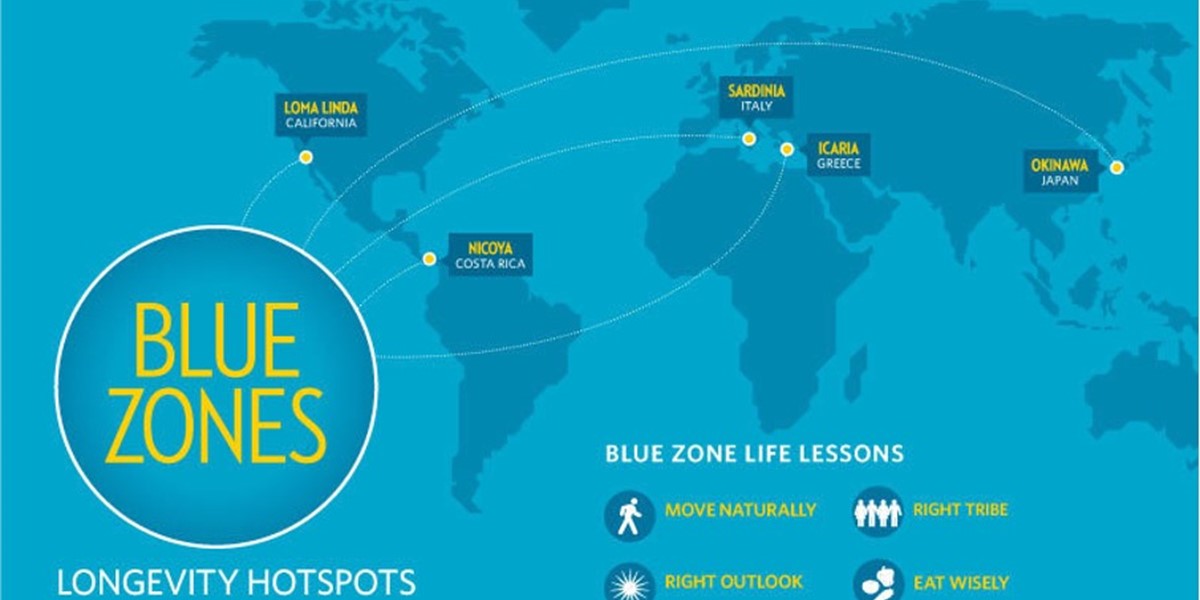Stijn Plessers holds a degree in Economics (Catholic University of Leuven). He started his career in 2006 at a private bank and then worked for KBC Asset Management for 15 years. At KBC AM, he was originally responsible for managing a large credit and OTC derivatives portfolio before focusing entirely on equities. First as an analyst for the technology sector and then as a manager of specialized, global equity mandates. In April 2023, Stijn made the switch to Econopolis Wealth Management.
The Quest for Longevity: Lifestyle Trumps Genes

The age-old question of longevity—how long we live—is increasingly shifting from one of fate to one of choice. While genes play a role, mounting evidence suggests lifestyle is the dominant factor. This shift has profound implications for healthcare, public policy, and the burgeoning "longevity" industry.
The quest to unlock the secrets of aging and extend human lifespan faces a fundamental challenge: our limited understanding of the underlying biological processes. However, a growing body of evidence suggests that lifestyle choices, rather than genetic destiny, play a significant role in determining how long and how well we live. While the search for miracle cures continues, experts increasingly believe that the most effective way to boost overall longevity is by focusing on preventative lifestyle interventions. This approach not only promises to be cheaper and faster but also addresses the root causes of aging, rather than merely treating its symptoms.
The traditional medical model, focused on combating diseases after they arise, has inadvertently extended lifespan at the cost of healthspan – the years lived in good health.This approach burdens healthcare systems and fails to address the underlying factors that contribute to aging. By shifting our focus to preventative measures like healthy eating, exercise, and stress management, we can potentially increase both lifespan and healthspan for the population as a whole. This paradigm shift represents a promising new direction in the quest for longevity, prioritizing proactive health management over reactive disease treatment.
The 80/20 Rule of Lifespan
Studies on centenarians—those who live to 100 and beyond—reveal a surprising truth: most avoid major chronic diseases like cancer, heart disease, and dementia until their 80s. This points to lifestyle, not just genes, as the key to a long, healthy life.
A study of over 400 centenarians in the U.S. and Canada found that a significant majority – 82% of men and 68% of women – reached 80 without experiencing cardiovascular disease, stroke, diabetes, Parkinson's, or cancer. This suggests that delaying the onset of these conditions is crucial to extending both lifespan and healthspan. The case of Jeanne Calment, a French woman who lived to an incredible 122, further underscores this point. Calment's extraordinary lifespan, born under Ulysses Grant presidency (18th US president) and died under Clinton (42nd US president), suggests that human longevity potential may extend far beyond what was previously thought possible.
So the remarkable longevity of centenarians may lie in a simple yet elusive factor: delaying chronic diseases. And how do they do that? While genetics undoubtedly play a role, studies suggest they account for only 15% to 30% of longevity. A landmark 1996 study of Scandinavian twins, with their identical genetic makeup, found that genes explain 22% to 28% of lifespan.
The Changing Face of Mortality
The leading causes of death have evolved over the past century. Infectious diseases, once rampant killers, have given way to chronic conditions, particularly cancer and heart disease. Now, dementia is emerging as a major threat, especially for women over 80.
The global dementia epidemic is reaching a tipping point. With over 50 million individuals currently living with this debilitating condition, the World Health Organization projects a staggering 152 million cases by 2050. This exponential growth poses a monumental challenge for healthcare systems worldwide. Alzheimer's disease, the most prevalent form of dementia, accounts for the majority of cases. However, despite the urgent need, no new treatments have been approved since 2003, underscoring the lack of progress in this critical area. This stagnation has sparked an intense push for innovative solutions, with regenerative medicine emerging as a potential game-changer.
The Blue Zones Blueprint
Research in "Blue Zones"—regions with exceptionally high longevity—offers valuable insights. Living in a "Blue Zone" gives a 10x higher likelihood of reaching 100 than living in the US. Residents of these areas typically live in rural communities, eat unprocessed diets, drink alcohol in moderation , drink coffee or tea, stay active, sleep 7-9 hours and enjoy strong social connections. While replicating this lifestyle entirely may be impractical for most, incorporating certain aspects, such as healthy eating and exercise, can significantly impact lifespan.

Source: World Economic Forum - https://www.weforum.org/agenda/2017/06/changing-the-way-america-eats-moves-and-connects-one-town-at-a-time/
The Medical Frontier
Delaying chronic diseases by a decade or more is no longer a pipe dream. In fact, it could be a more cost-effective strategy than treating diseases like cancer, which often require expensive, long-term care. The key, experts increasingly agree, lies in shifting the focus of medical research from disease treatment to disease prevention, effectively delaying the aging process itself.
This paradigm shift has the potential to transform healthcare. By slowing down aging, we can potentially push back the onset of chronic diseases, allowing individuals to live longer, healthier lives. This echoes the experience of centenarians,who often enjoy remarkably good health well into their 80s and beyond. Achieving this longevity dividend requires a multi-pronged approach, encompassing both lifestyle and medical interventions. Adopting healthy habits like balanced nutrition, regular exercise, mental stimulation, and moderate sun exposure can significantly impact healthspan. Simultaneously, avoiding harmful behaviors like smoking, excessive drug use, and overmedication is crucial. In addition to lifestyle modifications, a new wave of "longevity" therapies is emerging. While still experimental, these interventions, ranging from metformin and hormone therapy to rapamycin and senolytics, offer promising avenues for extending healthspan and delaying the onset of age-related diseases.
This holistic approach to aging represents a radical departure from the traditional medical model. By focusing on prevention and early intervention, we can potentially transform the landscape of healthcare, reducing the burden of chronic diseases and empowering individuals to live longer, healthier lives. While the science of longevity is advancing rapidly, challenges remain. Ethical concerns surrounding interventions like parabiosis, where older individuals receive transfusions from younger ones, need careful consideration. In addition, the quest for longevity is not just a scientific endeavor, but also an economic one. As the global population ages, the demand for healthcare and age-related services is skyrocketing. This presents significant investment opportunities in areas like pharmaceuticals, biotechnology and regenerative medicine.
The promise
Despite these challenges, the prospect of a longer, healthier life is within reach. By prioritizing lifestyle changes and leveraging emerging medical technologies, we can potentially add not just years to our lives, but life to our years. This is not just a scientific breakthrough, but a societal transformation with the potential to redefine what it means to grow old.
